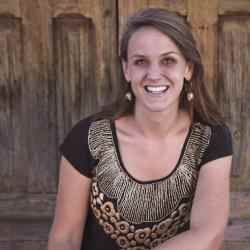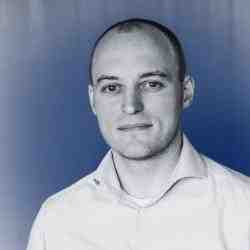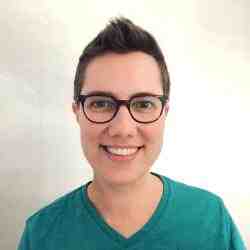Introduction
Marc Koska is founder of the Safepoint Trust. He invented and successfully mainstreamed one of the world’s first auto-disable syringe. Since beginning his work in the late 1980’s, Marc is credited with saving 10 million lives, having changed WHO policy and best practice on the ground through advocacy and campaigning.
The New Idea
Each year, doctors and nurses all over the world give 7 billion unsafe injections, infecting patients with deadly diseases such as Hepatitis and HIV, leading to more deaths per year than malaria. Marc Koska founded SafePoint Trust in 2006 to tackle the systemic problem of unsafe injections. Having invented and successfully mainstreamed the world’s first auto-disable, since beginning his work in the late 1980’s, Marc is credited with saving 10 million lives, having changed WHO policy and best practice on the ground. He has revolutionized not only syringes themselves, but the way injections are administered around the world. Working with all stakeholders from doctors, manufacturers and policymakers, Marc has successfully aligned economic, political, and social incentives, abolishing one of the biggest unnecessary evils.
After reading a newspaper article that revealed the scale of HIV infection through the re-use of syringes in 1984, Marc dedicated his life to tackling what he viewed as a lack of innovation and deadly market failure. Marc spent years researching syringe manufacturing before producing the K1 syringe in 1996, one of the first auto-disabled syringes, which physically prevents re-use by locking the plunger in place after the first use. Unlike other syringes available at the time, his design could be produced using existing machinery, making it easily distributed along current production and manufacturing models subsequently significantly dropping the costs of production. However, Marc recognized that the innovation and direct licensing would never achieve systemic impact unless he changed the global market, heavily controlled by manufacturers, and guided by global policies with limited enforcement mechanisms. To do so he pressured government to mandate the exclusive use of safe syringes. He then found and provided funding to assist the purchase of these syringes at the national level while also engaging manufacturers to convert to safe syringes to ensure the creation of sustainable and reliable supply chains. Throughout Marc supported ministries of health to purchase and promote auto-disabling syringes. Lastly, and crucially, the SafePoint Trust raised awareness with patients, healthcare workers, and the general public to build political pressure.
To disrupt the status quo, Marc works with all stakeholders in the field, politicians, governments, business leaders, national and global health bodies, other social entrepreneurs, and medical staff.
For over 20 years Marc has bridged the private and public health sectors to create viable markets for safe syringes thereby assuring their universal use and distribution. He reinforces these efforts by driving research to build public pressure, and ultimately shift local, national, and global policies. After over 30 years of advocacy, market innovation, and research efforts he has catapulted safe injections to the top of the international health agenda. Most recently, Marc has worked with the World Health Organization to instigate their third ever global health initiative in 2015 – a mandate on injection safety, which, when implemented will prevent 1.3 million deaths a year otherwise caused by dirty needles and save hundreds of millions of dollars wasted on avoidable illnesses and cross-infections. Having changed global policy and practice, Marc’s attention is shifting towards the next challenge, the curative market and un-immunized population who make up more than 30% of the world’s population. He aims to mirror his success with the auto-disabling syringe for this new challenge, driving technological innovation and improving access to life saving technologies for all. His most recent venture Marc re-imagines what syringes look like, using a blister technology that allows for syringes to be ten times smaller and lighter and enables patients to self-medicate.
The Problem
The re-use of syringes is responsible for the deaths of 1.3 million people every year, killing more people than malaria. A recent WHO-sponsored study estimated that in 2010 up to 1.7 million people were infected with Hepatitis B, up to 315,000 with Hepatitis C, and as many as 33,800 with HIV transmitted through unsafe injections. For decades, reusable syringes were seen as the best option, and as recently as 1998 the WHO was still advocating that certain types of syringes and needles should be reused up to 200 times as part of well-funded vaccination programs. Up until the early 1990s, most primary health care programs were supplied with glass or plastic syringes designed to be washed and sterilized between uses. Boiling was deemed to be an acceptable way to decontaminate these syringes, but evidence of heat resistant spores and hepatitis viruses prompted a change to steam sterilizers or pressure cookers, particularly in immunization programs. By the late 1990’s, the introduction of disposable syringes tended to exacerbate the problem because of immature markets and lack of political momentum. Despite a rising recognition of the danger of re-using needles in medical settings, the price of production was considered a major barrier to adoption and distribution as most auto-disabling syringes cost well above market price of re-usable syringes. Traditionally, syringes would be made for three cents and sold for five. As Marc says “syringes are made at very, very low cost, as a commodity product and are used by healthcare firms as a brand carrier, a market-getter, a loss leader. They have been a way of a manufacturer building a market share for the rest of their catalogue.”
The challenges to address syringe reuse were multi-layered, one part economic (too expensive to produce and introduce new syringes), one part political (with global policy and budgets competing over multiple priorities), and one part social (with a lack of awareness of the problem to generate any public pressure). These three factors created a perfect storm, leaving the public health and medical establishment responsible for continually infecting hundreds of thousands with no singular actor or set of actors to blame or hold accountable. Upholding the status quo worked for both manufacturers, drug companies, and producers while competing demands for time and money made syringe safety a low-priority on the global public health agenda. In the meantime, millions of individual patients were unwittingly and continuously putting themselves at risk each time they went to the doctor for treatment.
The Strategy
Marc believes that every person, regardless of where they are born, is entitled to safe and secure injections. Marc takes on this task by addressing the political, economic, and social conditions that cause misaligned incentives between public and private actors to create the market and policy landscape to make global safe injections a reality. At the base of his strategy lies his technological innovation, that provides the legitimacy and platform from which he influences, engages, and ultimately holds all stakeholders accountable to action. Based on the premise that a cheap and safe technology exists to prevent syringe reuse, SafePoint Trust works with governments, policy makers, and public health institutions as well as health workers and patients. To assure the universal distribution and adoption of one-use syringes Marc works on three levels: first, further driving innovation and technology development; second, influencing the political landscape by engaging industry and influencing policy; thirdly, engaging the public by equipping the media with research and empowering the patient through transparency and knowledge transfer.
Marc’s work began with his technological innovation, using parts of existing technology while revolutionizing the product and simultaneously reducing cost. To ensure that price would not be a limiting factor in the adoption of auto-disable syringes in poor countries, Marc needed to ensure that the production costs of his first syringe, the K1, could compete with standard syringes. To achieve this, he came up with a model that could be retrofitted onto existing factory equipment, with minimal additional training required and using the same distribution channels. Marc managed to keep the cost of manufacturing at just one cent more per unit, allowing him to go to market. To scale the reach of his innovation Marc founded Star Syringe and developed a license model, licensing the technology to 14 producers who have collectively produced over 4 billion auto-disabled syringes to date. Marc knew, however, that the innovation alone would not change market dynamics, let alone political incentives and behavior on the ground. Hence, the second aspect of his strategy was to align the motives of manufacturers, policy makers, and purchasers. First, Marc began working with bulk buyers such as UNICEF and GAVI who adopted ‘safe injection’ policies that mandated manufacturers into compliance. This initial approach had widespread success within the immunization market with Marc breaking ground in India, Pakistan, Swaziland, Nigeria, and Ghana. However, vaccinations represent only 10% of shots administered annually. Because there are no institutional buyers in the curative market, representing the other 90% of shots administered annually, his market penetration stalled, and the majority of injections within the curative market were still putting people at risk. To tackle these complex and overlapping problems, the SafePoint Trust launched multi-pronged campaigns working with ministries of health. Marc’s aim is for governments to mandate the exclusive use of auto-disabled syringes in their country or risking reduced funding from donors. In response, the global manufacturers are incentivized to decrease their production of re-usable syringes in compliance. With more and more governments now banning the import of reusable syringes, Marc is creating the conditions for change on a global level, with more and more following suits due to concerns around public health as well as image issues and tourism.
The final strand of Marc’s strategy lies in educating the public to further create demand and close the knowledge gap that gives health practitioners absolute control over an uninformed patient’s life. First, Marc launched the LifeSaver campaign. SafePoint has single-handedly rolled out one of the largest global health campaigns ever, reaching an audience of over 500 million people. This unprecedented awareness activity which kicked off in November 2008 in India included 14 press calls attended by 200 newspapers, nationwide radio broadcasts and short film screenings on television and in cinemas, and featured the moving story of Sachin, a little boy who contracted HIV through a re-used syringe. As a direct result of this campaign, the Indian Health Ministry made it mandatory for all government health facilities to use AD syringes in 2009. Alongside these media efforts, Marc launched LifeSaver, an open-source initiative that encourages all auto-disable syringe manufacturers to include a LifeSaver symbol on their products to guarantee patients safe injections. This simple label allows patients to see whether they are being treated with safe syringes using save injection procedures by trained medical staff. These interventions then increase pressure from the bottom up to close the knowledge gap between patient and practitioner and empower nurses to be changemakers.
Marc continues to work with the leading public health institutions, such as the WHO and PATH as well as targeting specific countries where he believed his work can have the greatest spillover effect. His next initiative will be to target South Africa where he is currently working with the Ministry of Health to influence needle policy across Southern Africa. After having lobbied the WHO tirelessly for almost 20 years, their recent global policy announcement, the third ever of its kind, means that by 2020, all manufacturers world-wide will be mandated to produce AD syringes. While there were many factors that led to this tipping point, Marc’s technical contributions, decades long advocacy, and surgical targeting of the people who were in a position to create the most effective change made him instrumental to this global policy shift. The WHO’s preliminary cost-effectiveness analysis states by implementing a new global policy that for every dollar invested an average of 14.57 dollars could be saved, mainly from reduced costs in treatment of HIV, HBV and HCV. Marc’s innovation and entrepreneurialism moved the safe injections agenda from idealism to reality, and has saved millions of lives to date and continuing to do so.
The Person
Marc grew up in rural England as an only-child and was mainly brought up by his grandmother. He attended a local primary school and later a grammar school where he did so well that his teachers decided to put him a year ahead at the age of 11. This proved to be disastrous for Marc leading to him to lose interest and motivation in school. Despite his challenges within the classroom and lack of enthusiasm, from a very young age, Marc felt compelled identify a greater purpose or direction for his life. After completing high school, with no interest in studying and no vocation, he decided to leave the country to travel the world.
What started as a trip to visit a girlfriend in Germany turned into a 3-year period that Marc spent travelling the world. Marc crossed all of Europe, sailed along the North coast of Africa and later crossed the Atlantic. He took up random and short term jobs along the way, working on a boat for a couple of months as well as a stage designer for big exhibitions and fairs. In the mid-1980’s Marc found himself in the Caribbean, where he worked to design models of crime scenes to be used in court. He loved this job, but was still looking for his real calling. During this period, the global HIV/AIDS crisis was unfolding. It was one article that caught Marc’s particular interest - an article that predicted that the re-use of syringes would soon be the biggest contributor to HIV infections. For Marc, the article was a game changer, igniting his interest in global public health and catalyzing his lifelong commitment to eradicating unsafe needles. He spent years learning and researching, without a background in engineering or public health, about the complex challenges. Marc’s initial efforts led him to invent a cheaper and safer syringe, the K1. He soon realized the myriad of challenges and resistance that ranged from dismal, death threats, to those trying to buy him out. Marc always kept innovating, and most recently designed a new kind of syringe, using a blister technology that fills the needle from the back. This technology will enable the abolishment of glass vials – an outdated equipment that makes transport and storage of medication difficult and poses health risks to patients due to dissolving micro glass particles.
Having spent over 30 years in the field, starting as an amateur, today Marc is a recognized expert in the field. He has received honorary doctorates from Brighton University and the University of Sussex as well as multiple awards, including The Economist’s Innovation Award and the Fogarty Institute for Innovation’s Tech Award. In 2006 he was awarded the Order of the British Empire for his contribution to global healthcare.




